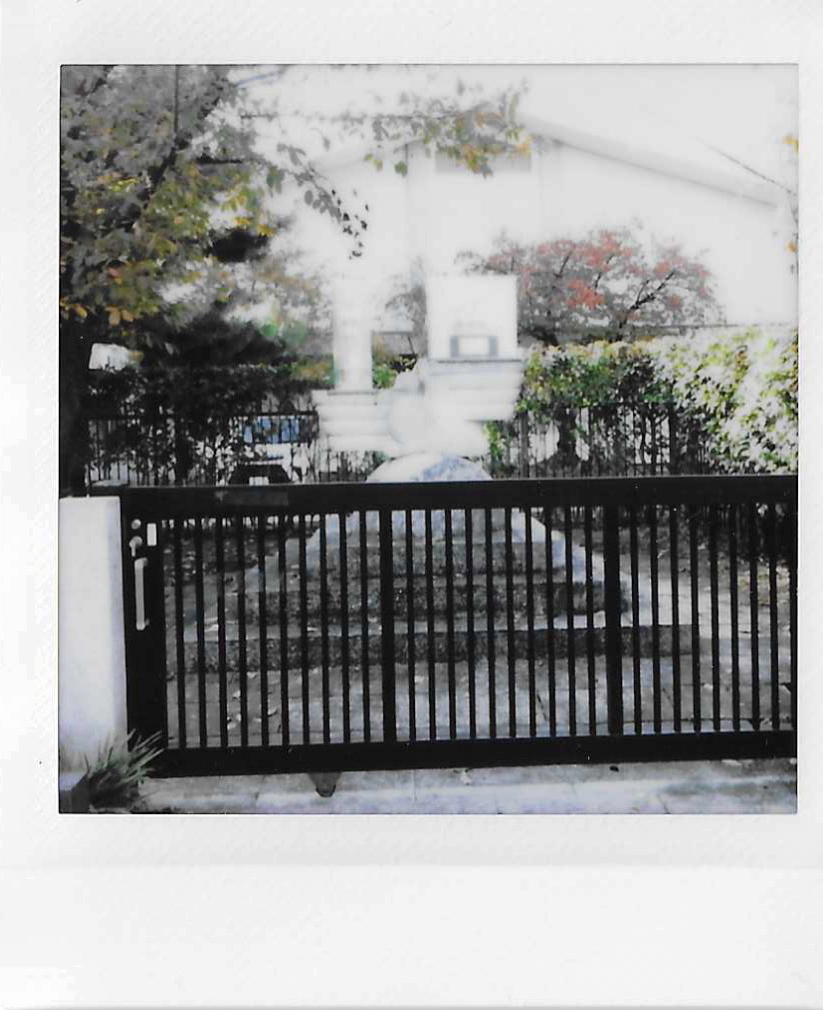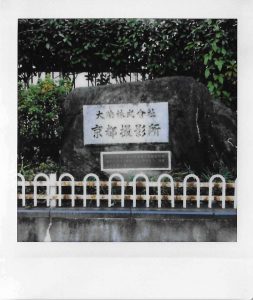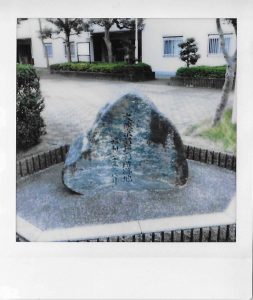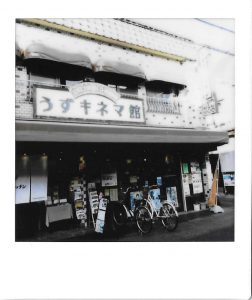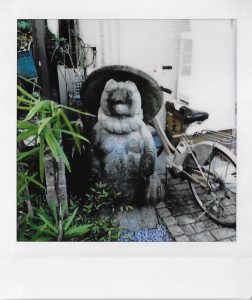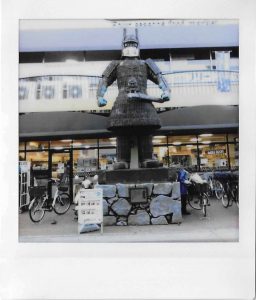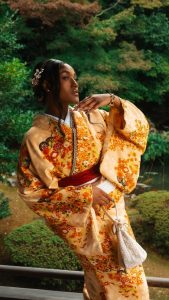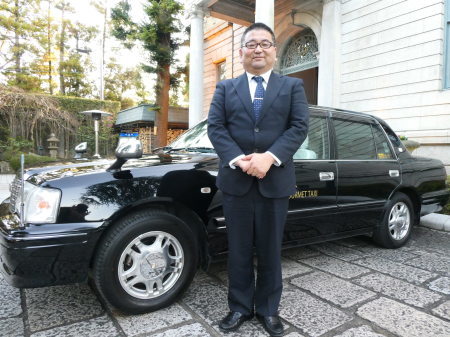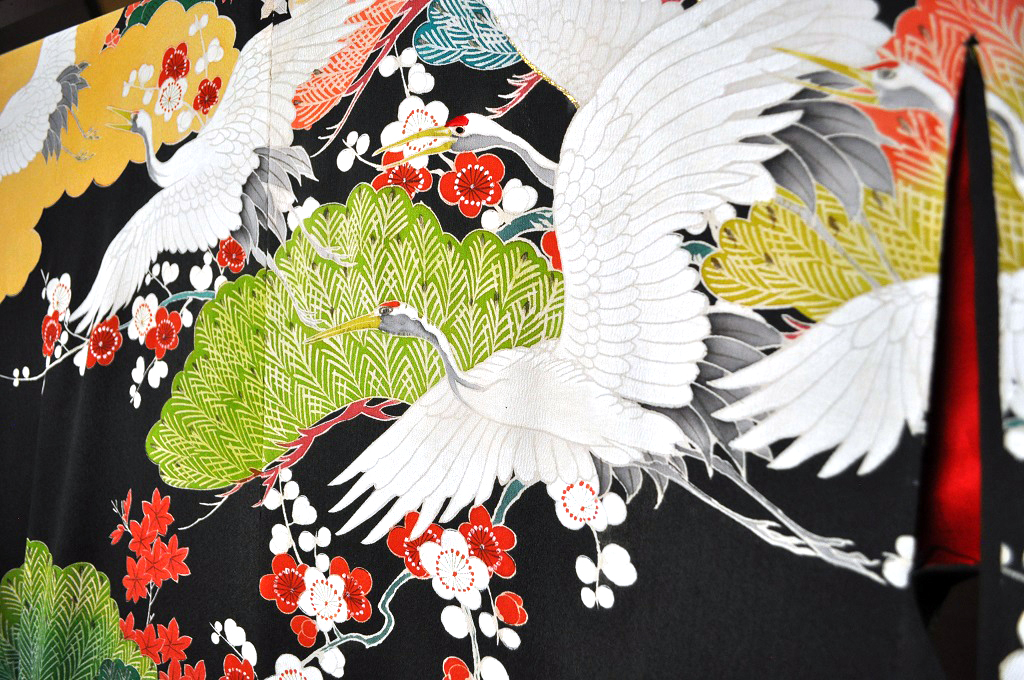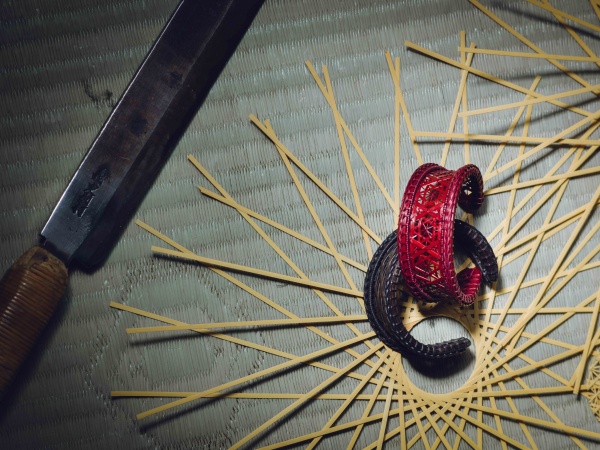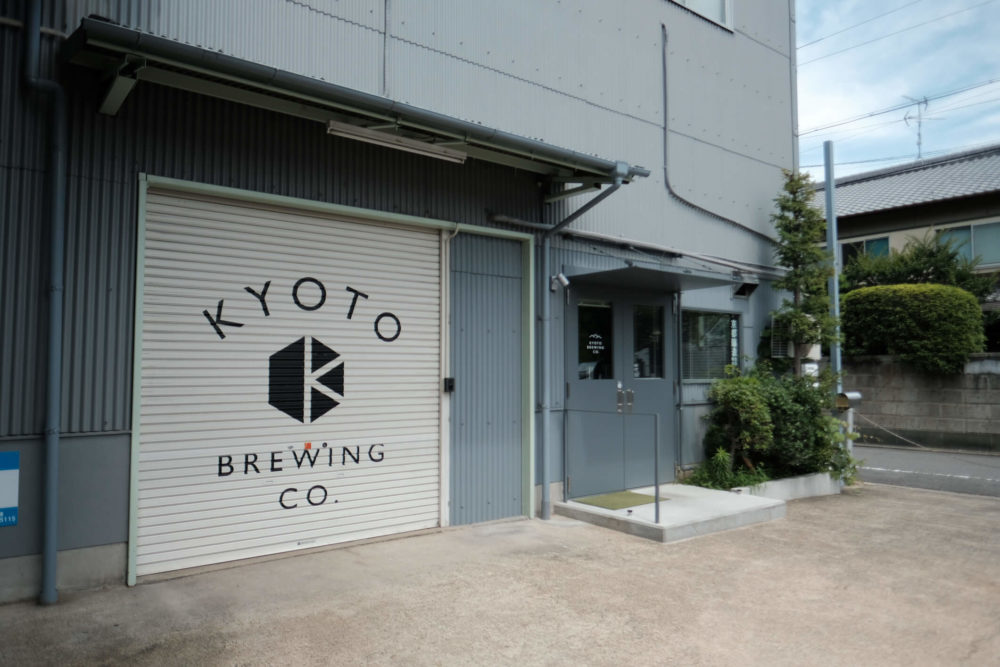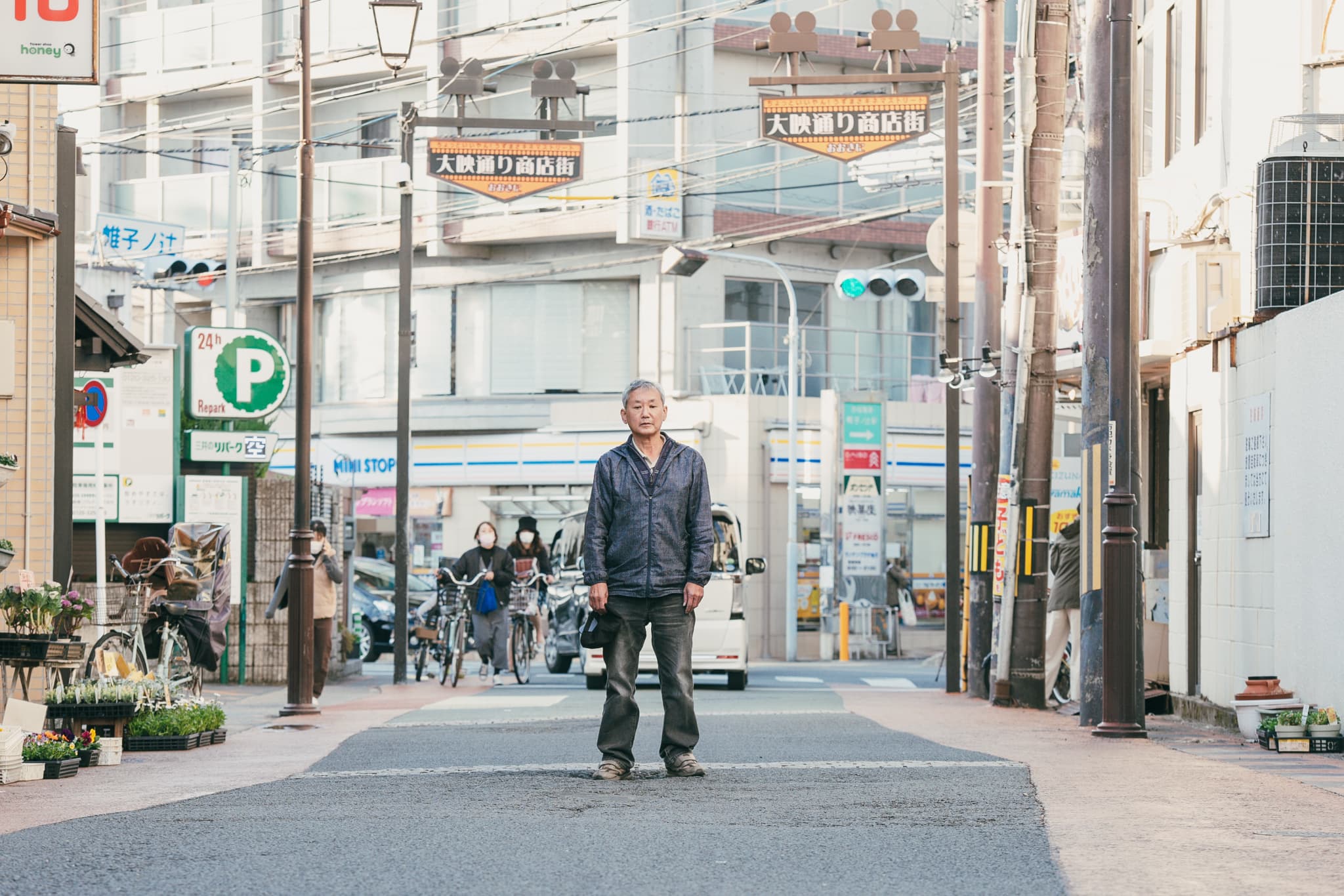
Daiei-dori Street is a local shopping street which runs between Keifuku Railway’s Katabiranotsuji Station and Uzumasa-Koryuji Station. “Daiei” was the name of the movie company Daiei Film Co. Ltd. which used to have its studios here. The Uzumasa area, where the street is, was known as the “Japanese Hollywood” due to the film studios of various movie companies that have been here since the Taisho era (1912-1926).
Daiei-dori Street was just an ordinary street at first, but banks, bookshops and grocery stores began to open shops on the street, forming a shopping district by the end of WWII. In the 2000s’, the street was reintroduced as the “Kinema Street” (kinema – the variant spelling of cinema) to promote the community through its relationship with the area’s characteristic industry – the film industry. This time, we asked Mr. Osamu Mitachi, the owner of the Tanuki-do Bookshop and chair of the Daiei-dori Street Promotion Association, to share the interesting features of this street with us.
Mr. Mitachi’s story
Movie-related motifs – pavement design like film tapes and streetlights like film cameras for example, can be seen along Daiei-dori Street. Although only Shochiku Co., Ltd. and Toei Company, Ltd. remain now, there used to be three film companies in this area during the hay days of the movies in the 1960s’. The other company was the Daiei Film Co. Ltd., the namesake of this street. In 1950, Daiei Film’s movie Rashomon directed by Akira Kurosawa won the grand prix at the Venice Film Festival. According to Mr. Mitachi, “The news of Daiei winning the grand prix made the company’s name, ‘Daiei,’ a household name.” He also says that the name of the street might have been the result of “the street near Daiei Film,” being shortened to “Daiei-dori Street.”
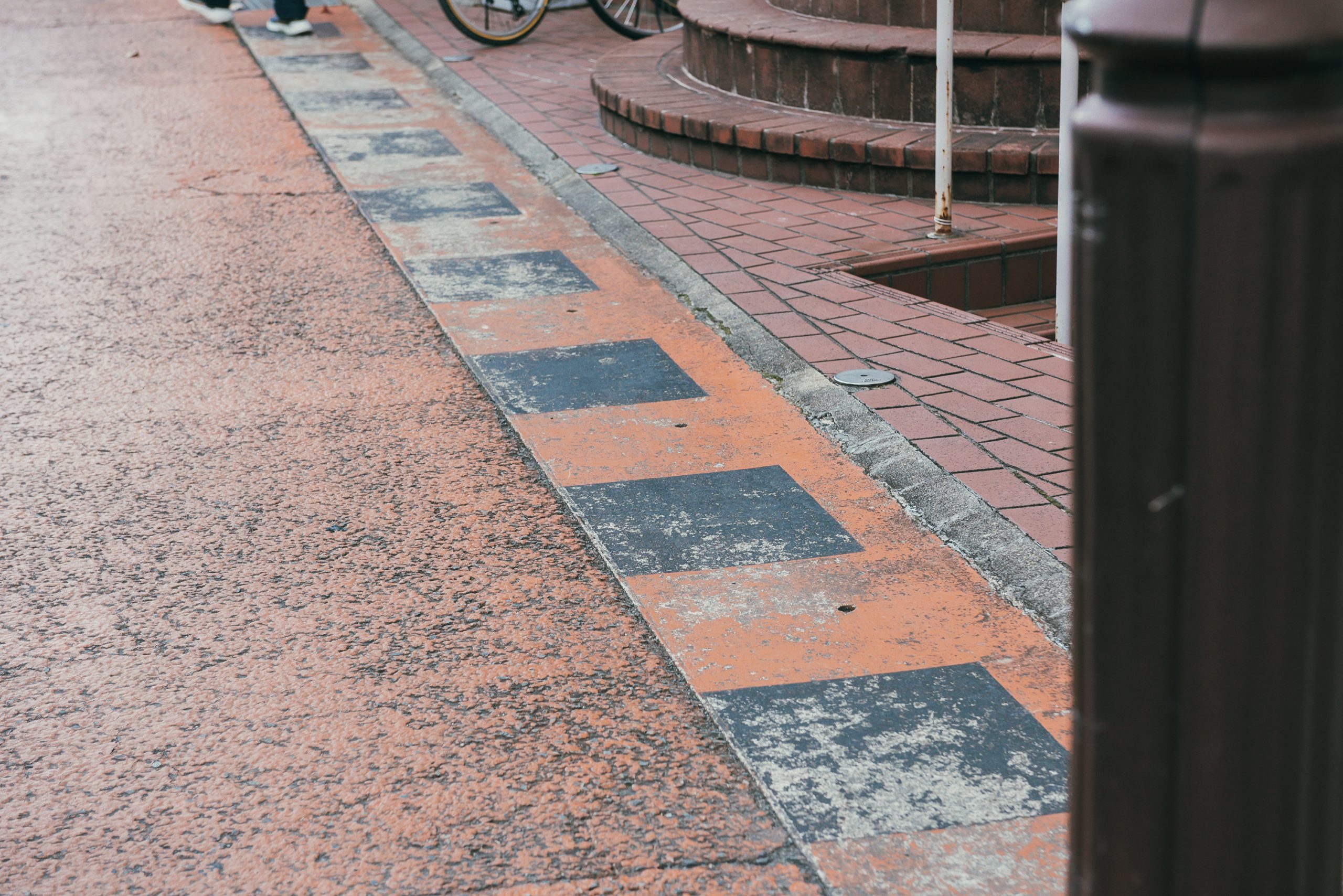
The pavement design like film tape
Mr. Mitachi was born in Uzumasa and has since lived here for 67 years. He started helping his family running the Tanuki-do Bookshop when he was an elementary school student and took over the business as soon as he graduated from university, witnessing the ups and downs of the street all through his life. When the movies were at their prime in the 1960s’, Mr. Mitachi was still a child. He recalls the Daiei Film’s studios near Uzumasa Elementary School, about a 5-min walk from here, and seeing the neon sign, saying, “The Best Movies: Daiei,” shining bright after it started to get dark on his way home from school. Furthermore, about fifty meters away from there is the “Grand Prix Square” where a replica of the grand prize’s trophy that Rashomon won at the film festival is displayed. It remains a testimony to the local pride in Daiei Film.
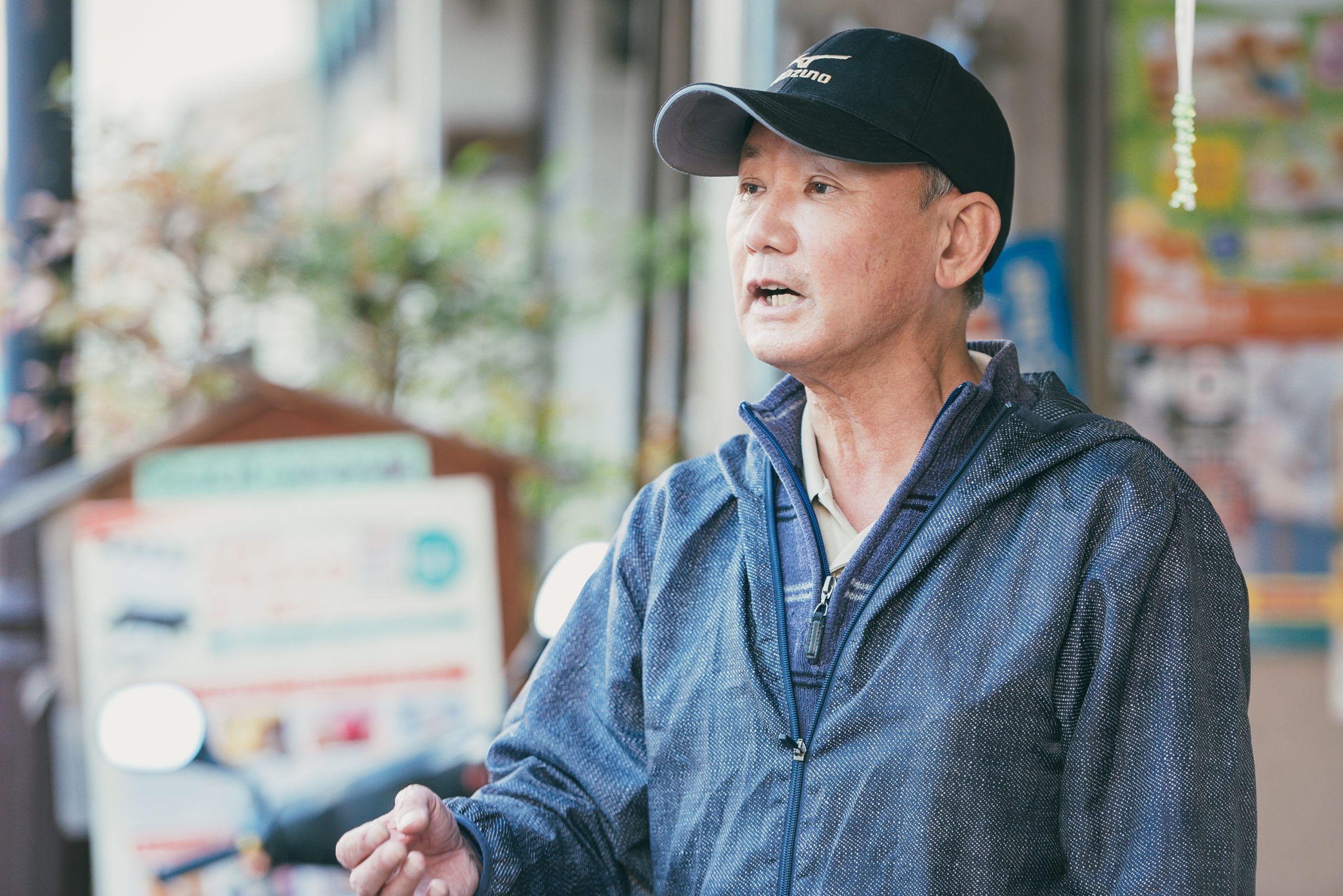
Mr. Mitachi
To Mr. Mitachi who was born and raised here, the film studios were part of his everyday life. When he was tending the shop, it was commonplace to have people coming from the studios. The actress Masako Natsume and director Eiichi Kudo which Mr. Mitachi was a fan of were among the names of the many film-related people who visited Tanuki-do Bookshop.
Although this street had thrived together with the film industry, after the mid-60s’, the movies began to lose their popularity to television. The Daiei Film studios were slimmed down until the company finally went bankrupt in 1971. Daiei-dori Street also lost its vigor at the same time. However, change came about in the late 1990s’ when the former chair of the shopping street’s association took the initiative and started promoting the street with the movie legacy at its core. The campaign proved successful, and now, Daiei-dori Street has become popular as the “Kinema Street,” attracting visitors from within and out of Kyoto. Mr. Mitachi guided us along the street and places related to the film studios.
Daiei-dori Street flourished with the film industry
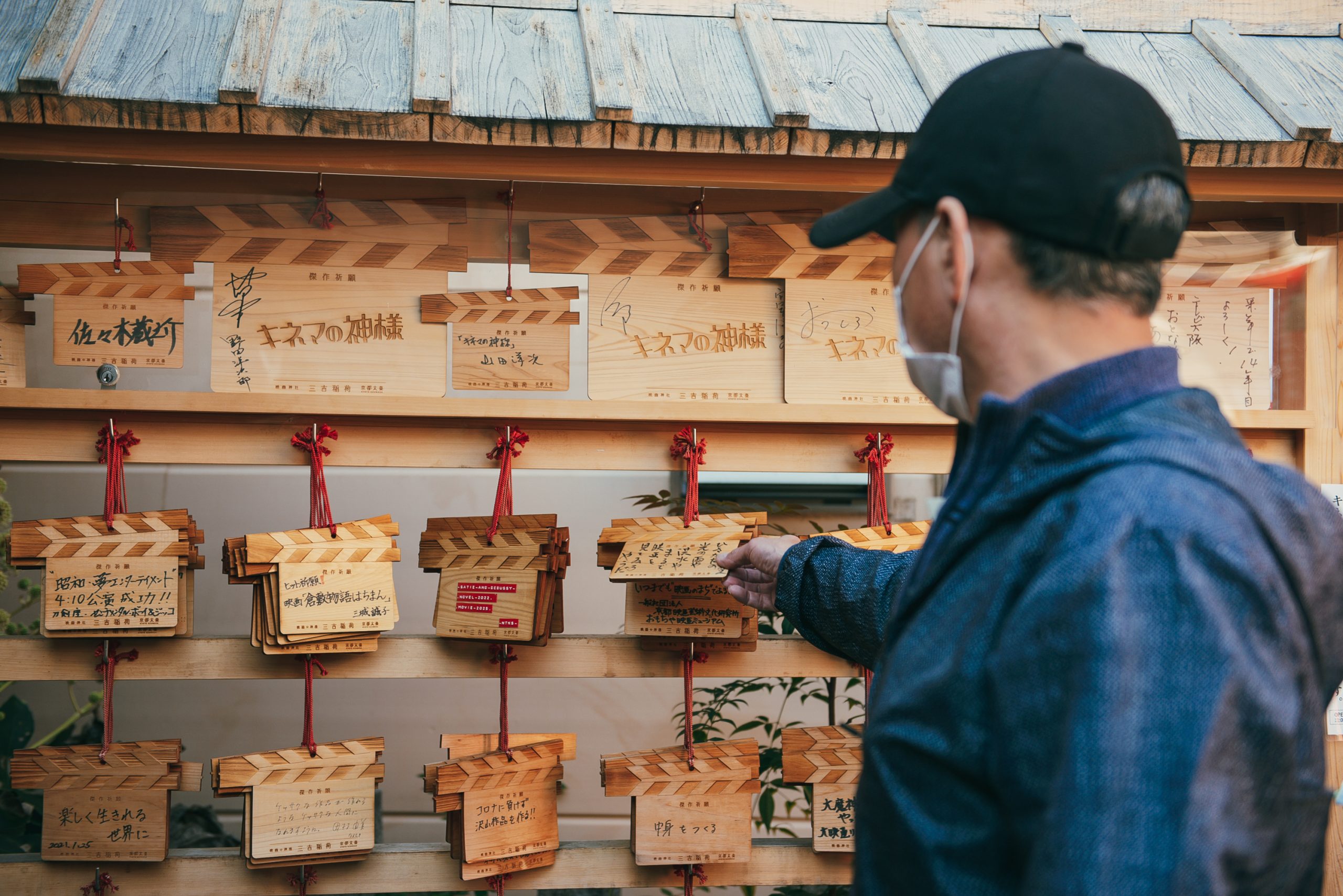
The wooden tablets are hung in the shrine to make wishes or to express gratitude
“First, let’s pay a visit to the Sankichi Inari Shrine,” said Mr. Mitachi. This little shrine in an alley near the Tanuki-do Bookshop has gathered much devotion from people in the film industry. The design of this shrine’s votive plaques come from the clapperboards used during film shooting, and there seem to be some signed by well known names and people in the trade. Also, there is a honorary statue of Shozo Makino, also known as “the father of films,” with in the shrine precincts, and the statue is engraved with a list of benefactors including some of the most popular movie stars of Japan.
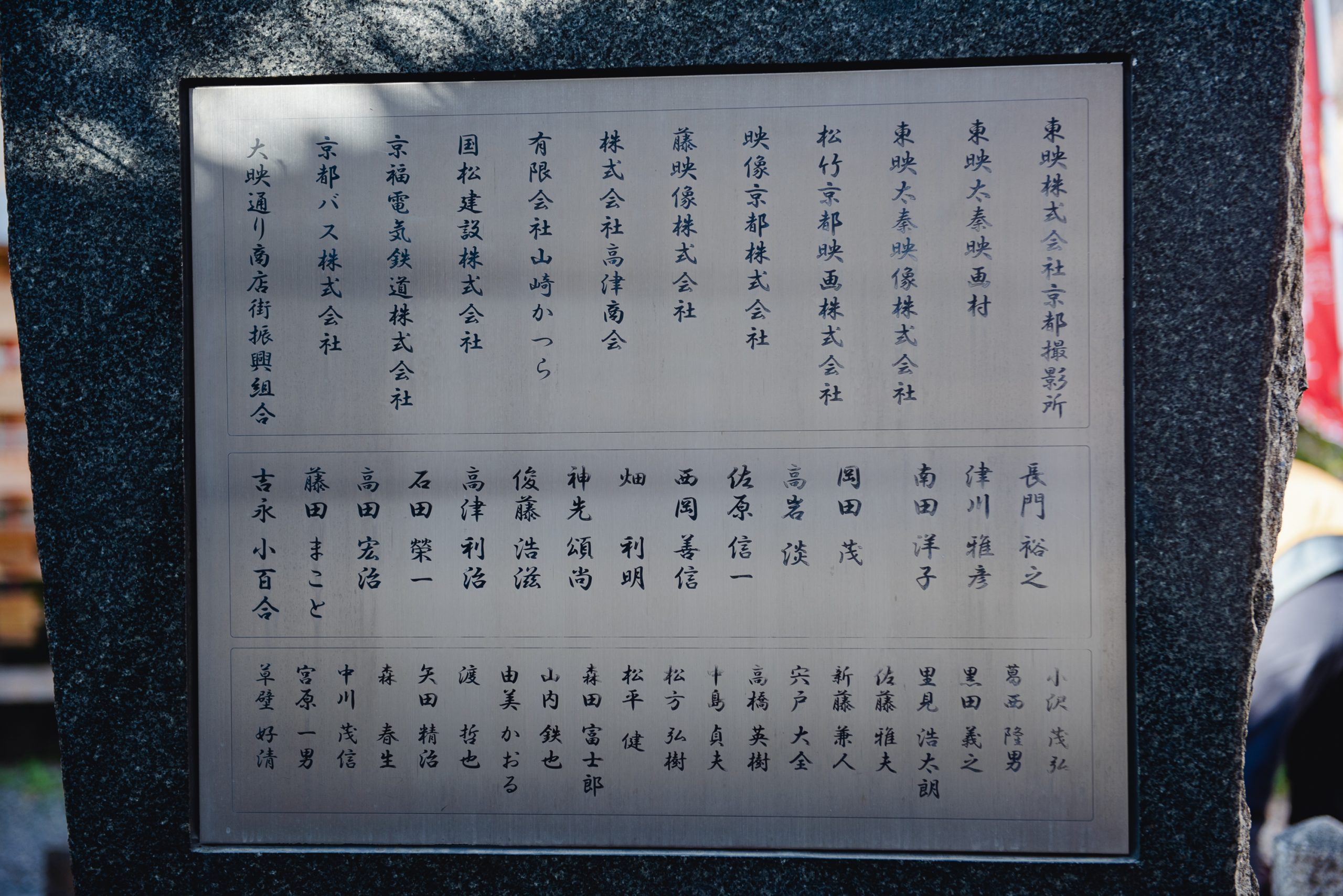
The list of the benefactors
Then, we headed further south from the shrine to the local junior high school. “The property of that condominium and the one beyond, and the Uzumasa Junior High School used to be where the Daiei Film Kyoto Studios used to be,” said Mr. Mitachi, pointing at an area that appears to be nothing but an ordinary residential area now. It was difficult to imagine that this was where the studios were at first, but there, by the main gate of the junior high school was a monument indicating the site of the film studios. Next to the school is the “Grand Prix Square.”
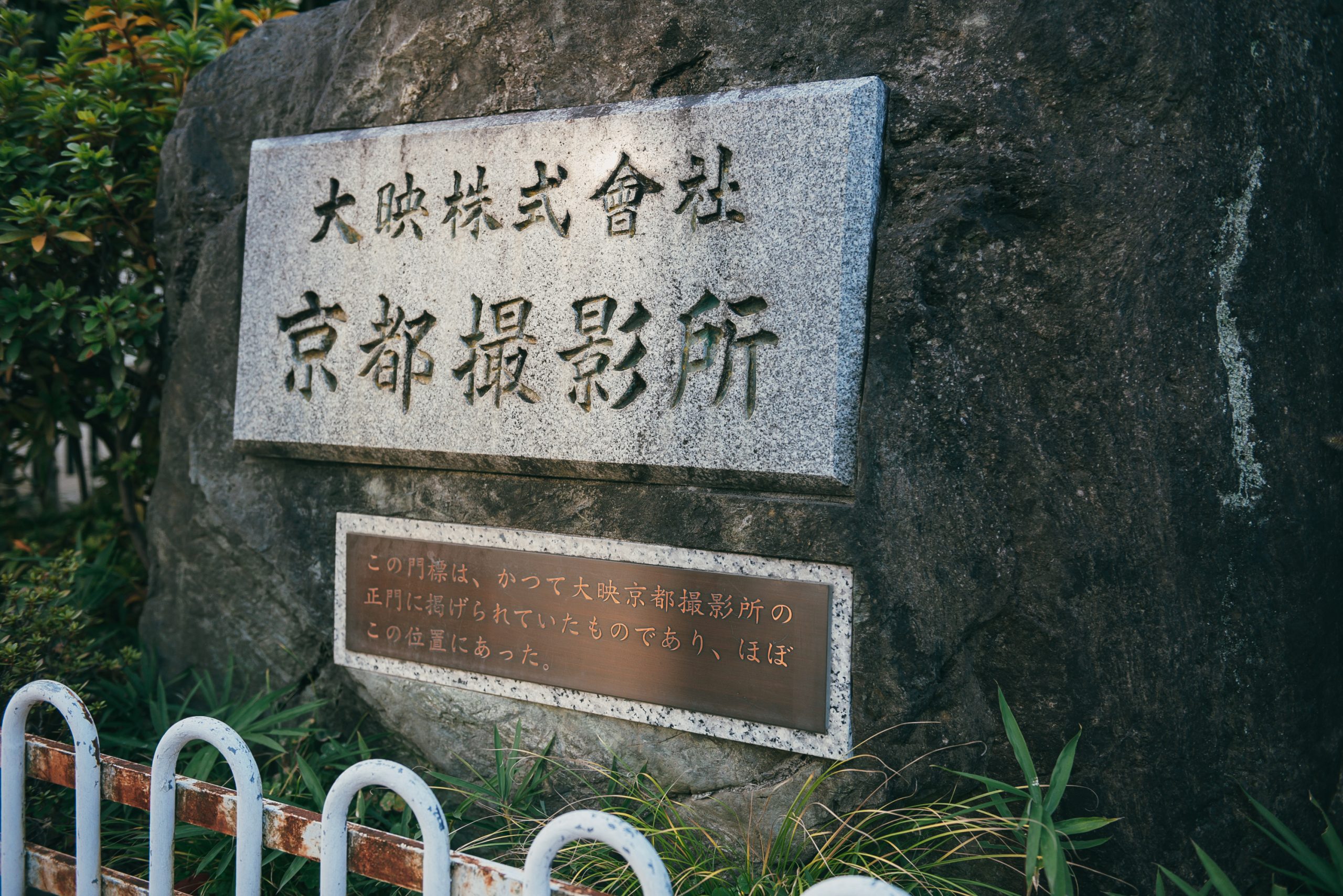
Above: “Daiei Film Co. Ltd. Kyoto Studios” Below: “This nameplate was on the front gate of Daiei Film Kyoto Studios which was located almost exactly at this location.”
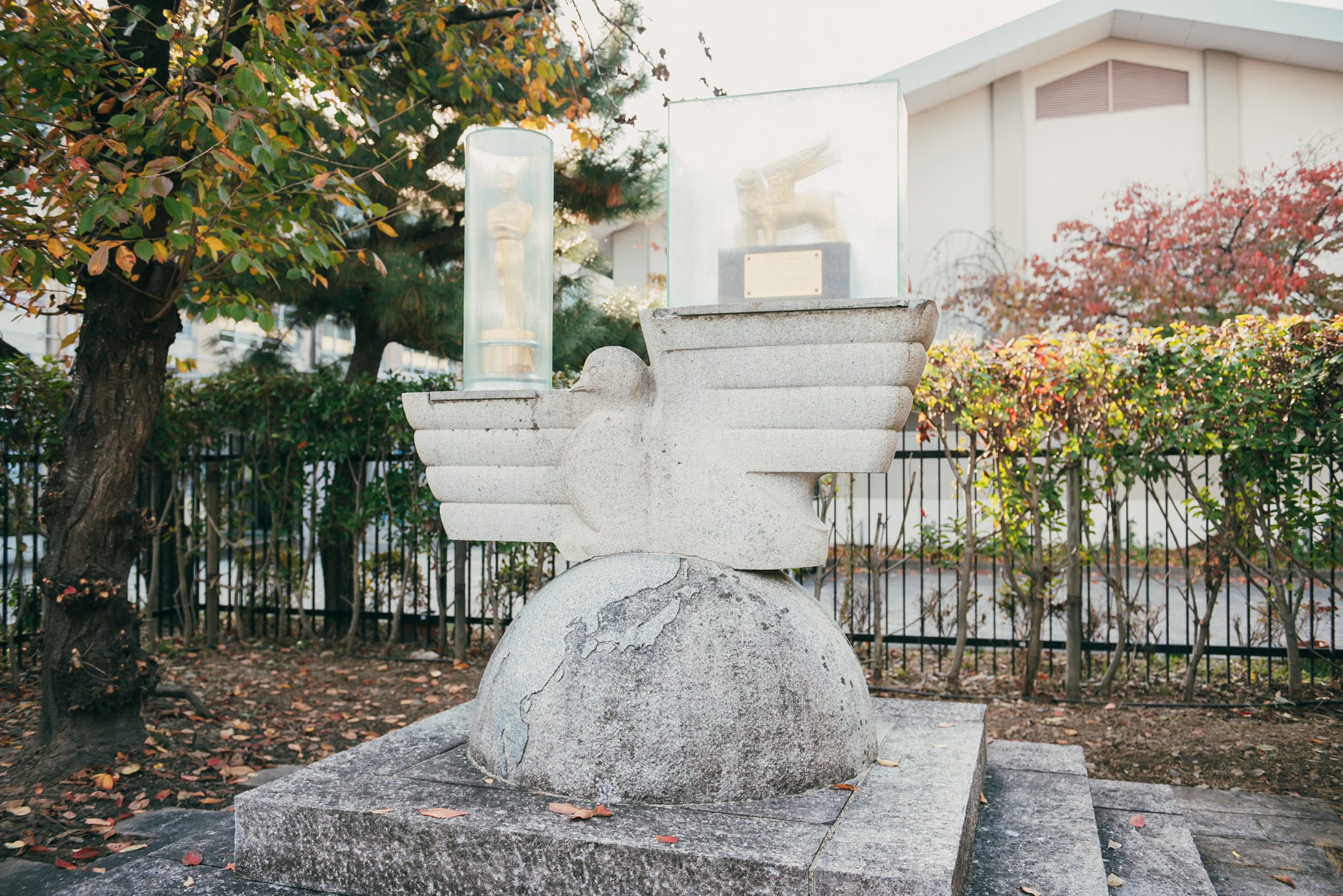
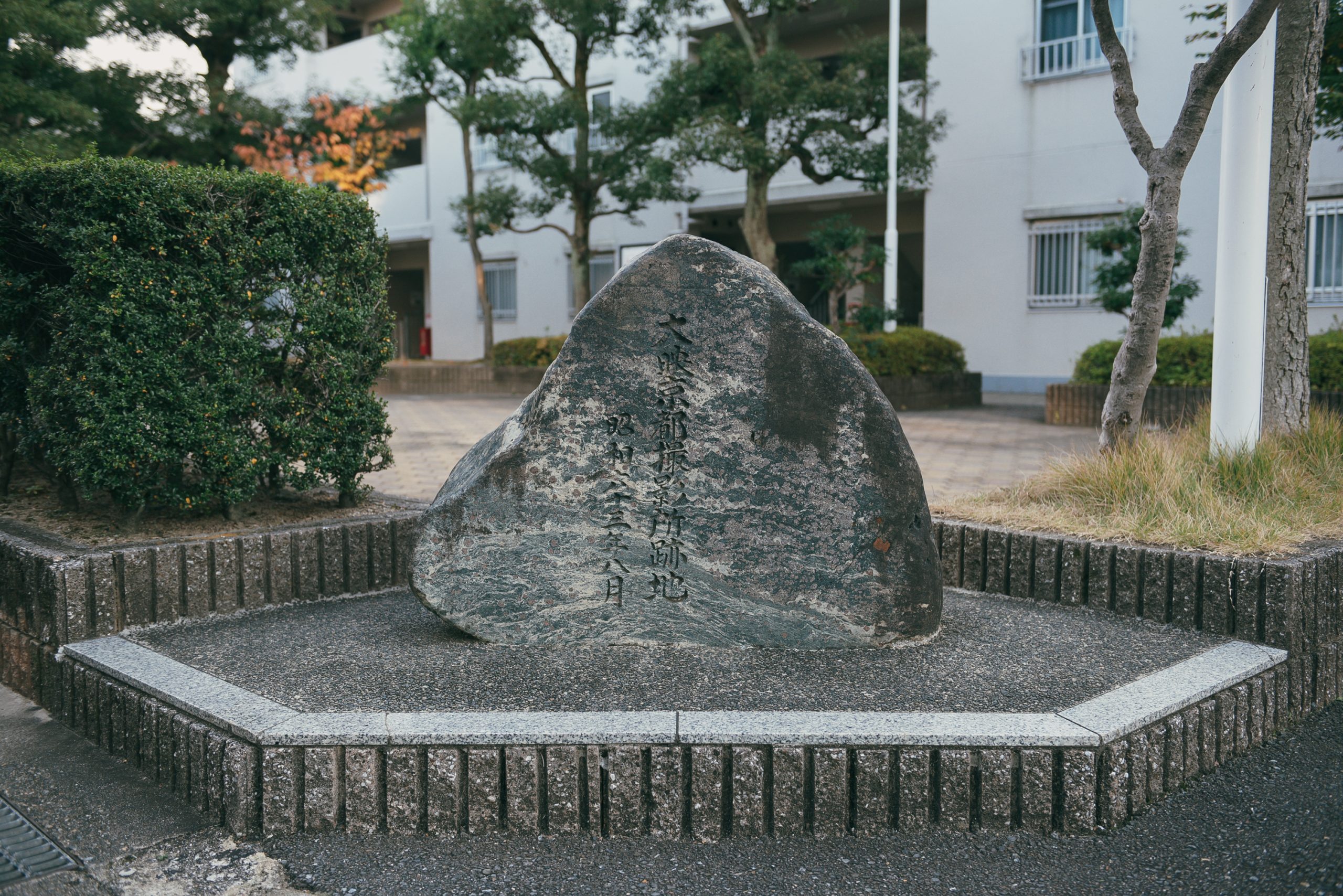
The monument’s inscription: “The Site of Daiei Film Kyoto Studios / August 1988”
This monument was erected by locals and former film studio associates driven with a sense of mission to “become the storytellers to pass on the legacy.” Also, “I’m afraid that it’s not enough to get the picture across by just saying, ‘this is where the film studios were.’ I think there needs to be something more tangible, like this,” says Mr. Mitachi. Thanks to the people with strong passion like him, visitors are able to feel the history of the film studios.
The Daimajin statue and the restaurant Kinema Kitchen
We went back to Daiei-dori Street and headed towards Katabiranotsuji Station. On the way, there was a retro-fashioned building with a sign saying, “Uzu Kinema-kan.” This is where the restaurant Kinema Kitchen is. Various types of home-cooked style dishes are served here, and the visitors can also enjoy looking at the collection of scripts and cameras that were actually used to take footage. This shop has played a major role in fostering the “movie-scene atmosphere” of the area and is constantly visited by movie fans.

“Uzu Kinema-kan”
Further down the street towards the station, there is a giant statue in front of a supermarket. This is a character called Daimajin from a popular movie series released in 1966 and was erected here in 2013. “Let’s meet in front of Daimajin,” is a phrase that comes naturally among locals and it is also a must-see landmark among people who come to the area for the first time.
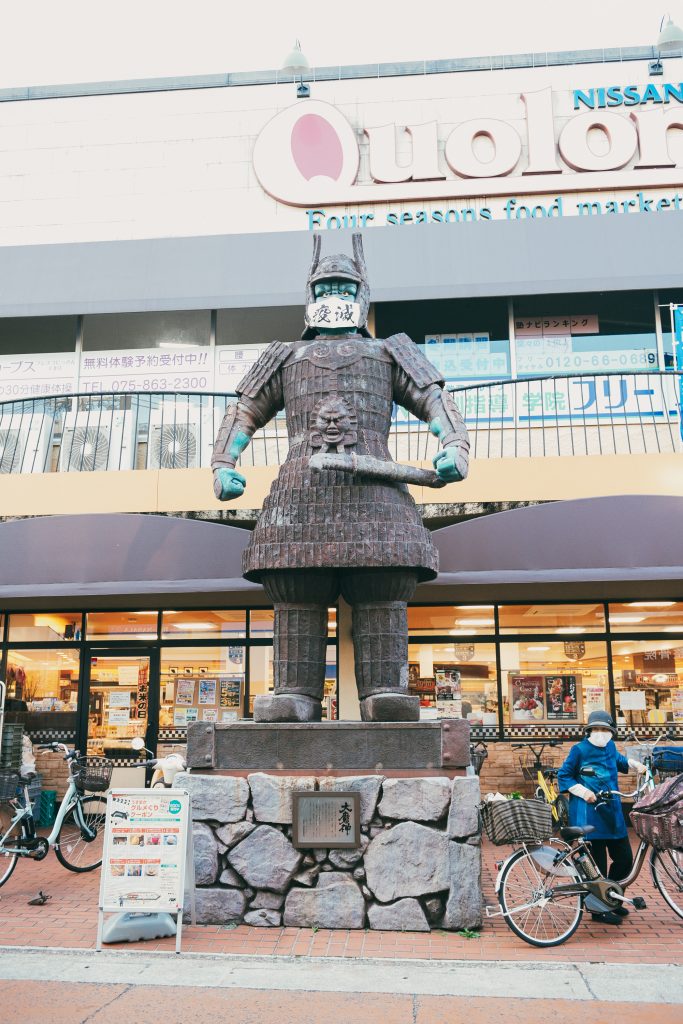
Daiei-dori Street’s present and future
Daiei-dori Street has appeared in various films until now and has been well known among movie fans. On top of that, the street has recently been hosting events with no need to be a movie fan to enjoy. For example, the Yokai Parade or “Monster Parade,” which was jointly organized by the Keifuku Electric Railroad Co.,Ltd. and neighboring shopping districts, has now become an annual summer event. Now, they are working on projects such as decorating all the shops along the street with period-drama-themed norens. [noren: a short, flat curtain hanging in front of shop entrances] Also, in collaboration with travel agencies, they are planning tours around the film studios and Daiei-dori Street that are enjoyable for both old movie fans and young generations. Daiei-dori Street is undergoing change to become a place that is not only attractive to movie fans, but enjoyable to everyone who visits the street.
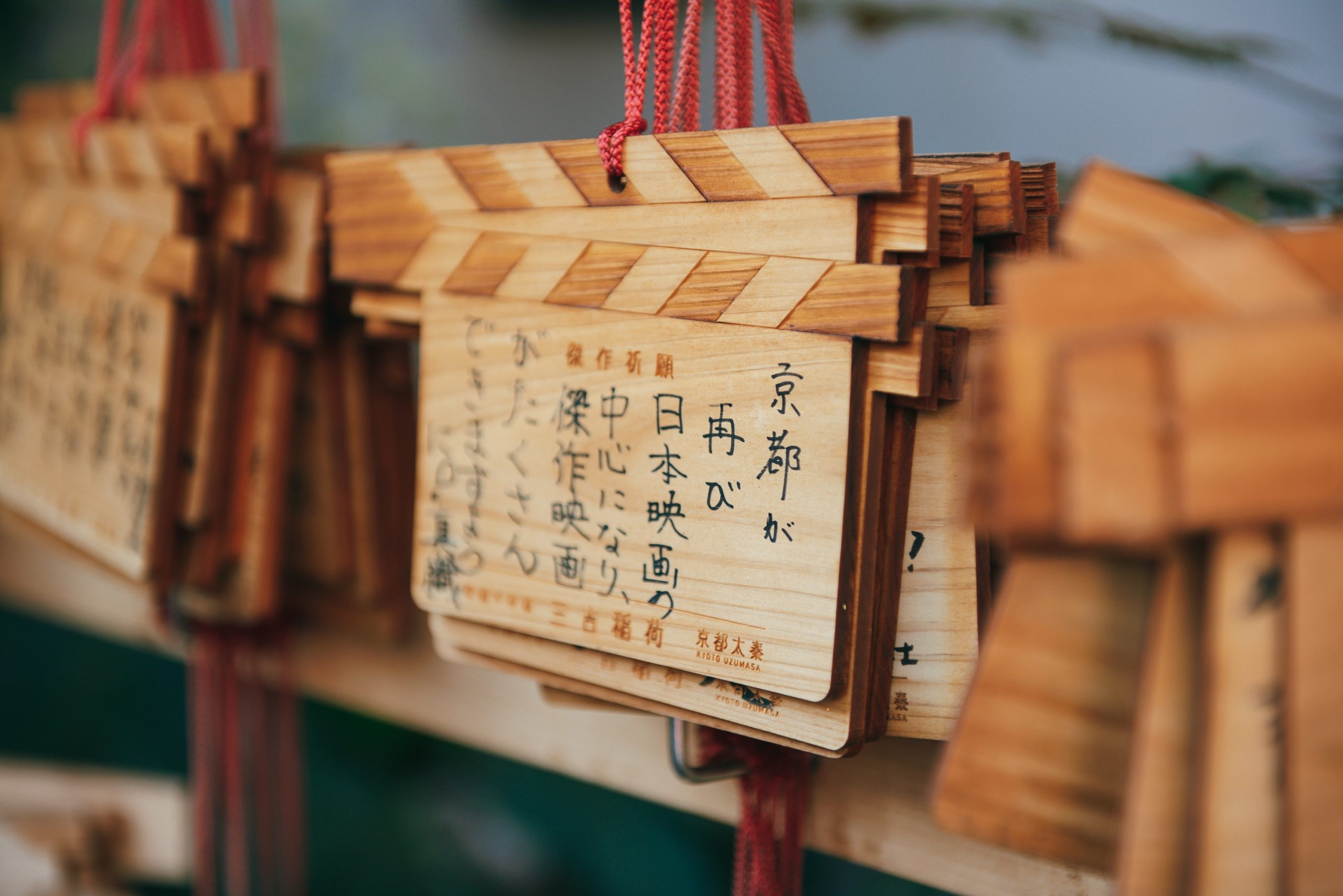
A wish made on a tablet by an anonymous dedicator: “May Kyoto become the center of Japanese films again and create many masterpieces!”
Daiei-dori Street through the eyes of Mr. Mitachi
